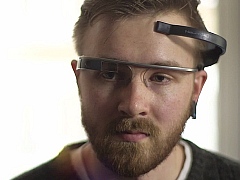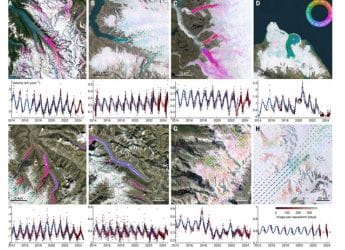- Home
- Science
- Science News
- Google Brain Makes Use of Neural Networks to 'Enhance' Pixelated Images
Google Brain Makes Use of Neural Networks to 'Enhance' Pixelated Images

Some technologies depicted in sci-fi movies appear too far-fetched at times but now it seems like the 'zoom and enhance' method, often used to identify crime suspects from pixelated photos, is closer to reality than ever. Google Brain research team has come up with a technology that is able to produce detailed pictures from originally pixelated source images with the help of two neural networks.
The neural networks - Conditioning and Prior - enable Google Brain's software to generate pictures that are much more detailed than the original pixelated 8x8 images. At this point, we would like to clarify that the extra detail is not produced from the source image itself but is added by the best possible guesses made by the software.
The technique used by Google Brain for producing extra detail by the software essentially consists of two parts. First, the Conditioning neural network takes the original pixelated 8x8 picture, compares them with other images available on internet, and downsizes high-res images to find a possible match. The Prior neural network then uses implementation of PixelCNN to add realistic details to the 8x8 source image, Ars Technica points out. Then, on the basis of the acquired knowledge from the analysis of similar class of images, more details are added to the image.
Finally, the output from both neural networks is mashed into one picture to produce a significantly more detailed image than the original. Even though the technique reportedly performed well in real-world testing, it still cannot be termed reliable. As the output image is not generated with real details but guesses, more complications arise for proposal of its usage for surveillance criminal identification.
Get your daily dose of tech news, reviews, and insights, in under 80 characters on Gadgets 360 Turbo. Connect with fellow tech lovers on our Forum. Follow us on X, Facebook, WhatsApp, Threads and Google News for instant updates. Catch all the action on our YouTube channel.
Related Stories
- Samsung Galaxy Unpacked 2025
- ChatGPT
- Redmi Note 14 Pro+
- iPhone 16
- Apple Vision Pro
- Oneplus 12
- OnePlus Nord CE 3 Lite 5G
- iPhone 13
- Xiaomi 14 Pro
- Oppo Find N3
- Tecno Spark Go (2023)
- Realme V30
- Best Phones Under 25000
- Samsung Galaxy S24 Series
- Cryptocurrency
- iQoo 12
- Samsung Galaxy S24 Ultra
- Giottus
- Samsung Galaxy Z Flip 5
- Apple 'Scary Fast'
- Housefull 5
- GoPro Hero 12 Black Review
- Invincible Season 2
- JioGlass
- HD Ready TV
- Laptop Under 50000
- Smartwatch Under 10000
- Latest Mobile Phones
- Compare Phones
- Realme P4x 5G
- OnePlus Ace 6T
- Nubia Flip 3
- Nubia Fold
- OPPO A6x 5G
- Samsung Galaxy Z TriFold
- Poco F8 Ultra
- Poco F8 Pro
- Asus ProArt P16
- MacBook Pro 14-inch (M5, 2025)
- Poco Pad M1
- Poco Pad X1
- Just Corseca Skywatch Pro
- Honor Watch X5
- Acerpure Nitro Z Series 100-inch QLED TV
- Samsung 43 Inch LED Ultra HD (4K) Smart TV (UA43UE81AFULXL)
- Asus ROG Ally
- Nintendo Switch Lite
- Haier 1.6 Ton 5 Star Inverter Split AC (HSU19G-MZAID5BN-INV)
- Haier 1.6 Ton 5 Star Inverter Split AC (HSU19G-MZAIM5BN-INV)

















